|
I'm just about to attempt to fire up Project 41, a 1987 VFR700 which hasn't run in at least nine years. When I do, I always mount the full airbox and filter. This bike came to me with the airbox lid drilled with holes which seems to be a common misguided go-fast modification. Until I locate a replacement my hillbilly fix is to tear strips of tape to seal those holes. For this I use the strongest tape I've ever come across, Gorilla brand black tape. I think this stuff would stay in place through the apocalypse and so might actually be a practical long-term fix, so will work fine for this purpose. While I was messing with this, I happened to notice that the snorkel on another 2d-gen airbox I have on hand looked a little different. Sure enough, this '87 is a shorter version of the same design, even showing the same numbers cast into the plastic. I have no idea why…maybe to give a little extra clearance from the frame for cleaner airflow?
0 Comments
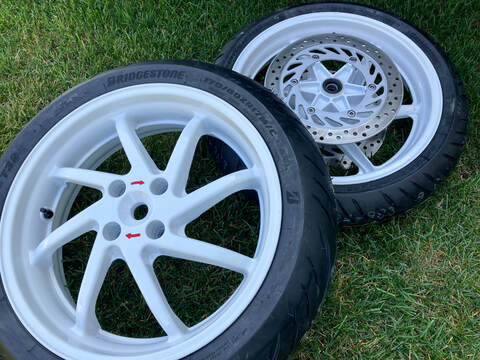 Today is Independence Day in America, with family and food on the agenda, often too much of one or both. But yesterday I found myself working on various items, including mounting a set of freshly repainted wheels onto Project 39, a 1993 VFR750. I had these professionally repainted in the base color of the pearl white (with no pearl). I refinished the rotors myself and installed 90° valve stems, plus a little detail with red added to the cast-in directional arrows. Finally, Bridgestone T32 tires, in OEM sizes, were spooned on. These wheels will be the finishing touch to this project. 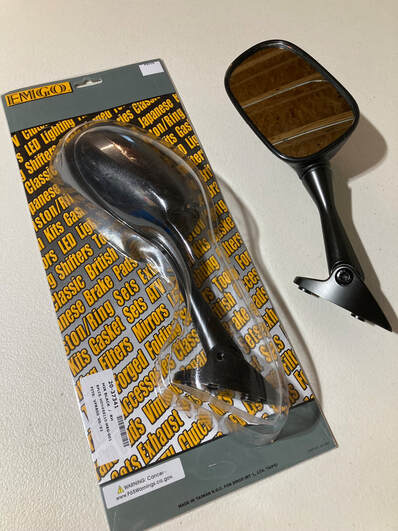 I also received the replacement mirrors for the '93. These are EMGO direct reproductions for the 2000-01 VFR800 but bolt right up to the '93. I like them as replacements for the 3d- and 4th-gen bikes with their bulky, and often worn out, rubber-covered stems. I think they give a lighter, sleeker look. 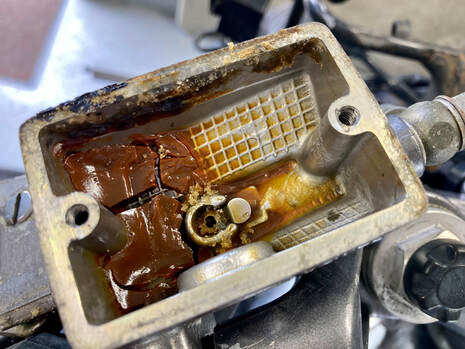 I also made some disassembly progress on Project 41, a 1987 VFR700, including removing the brake calipers and master cylinders. I find all manner of surprises when I open master reservoirs, from pristinely clean to what was found in this bike's clutch reservoir. Looks like peanut brittle but without the taste. Also note the mold and corrosion growing around the sealing edge. Makes me wonder what the rest of the clutch hydraulics look like. Happy 4th of July to all Americans, and let's all take a moment to appreciate how fortunate we are to be living in free and independent societies, wherever that may be.
This tongue-in-cheek image recently appeared on ADVrider.com's VFR thread. It clearly places the Honda VFR as the most versatile motorcycle of all time. I especially like the little cooler strategically placed above the headlight and the second giant tankbag on the canoe.
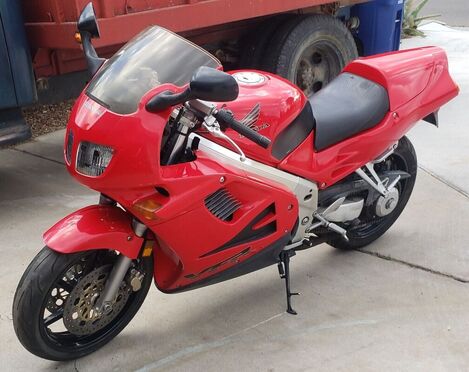 Click on image for the eBay link Click on image for the eBay link What: 1996 VFR750F Why: Low miles, complete, original Where: Albuquerque, NM Price: Auction/$5499 OBO The 4th-gen VFR is the furthest Honda took the carburetor-ed V4 development, adapting fuel injection and many more changes for the 5th-gen 1998. That's not an indictment of carbs — they have a satisfying visceral, analog feel for many of us. But, fuel injection was the future and that technology will never retreat. Today's example has a few things going for it, showing only 15,240 miles with a few rare period extras and very original condition with the exception of the muffler and a strange rear fender/tail light modification. Extras include a full set of very rare color-matched RKA soft saddle bags/tail pack, Renntec luggage rack, Vance & Hines slip-on, passenger seat cowl, grab bars and tool kit. The seller knows the bike's ownership history, having bought it from his friend, the original owner. Also available via a Craigslist ad, offered at $5499 or reasonable offer. Ebay auction ends July 4th. Found on my local Craigslist, here's a full set of 6th-gen VFR800 tank and body plastics listed for $500 in Deerfield, IL, a north suburb of Chicago. They're obviously from an Anniversary Edition, but will fit any 6th-gen. Our seller states that they were previously painted black (apparently with the decals left in place?) and show "no cracks or signs of repair." If that's true and the tank is rust-free inside, then the asking price seems fair — I would figure about $100 additional to ship this collection so that would need to be considered. Want to try a custom look for your 800? Need to replace your damaged bodywork? Here ya go. (click on image for the C-list ad) Here's a few ideas….
Project 41 finally got its much-needed bath. It's never fun to begin working on a dirty machine, and a good cleaning lets me see what I'm facing and also shows the bike in its best light. What might originally appear as a depressing prospect can completely change its tune when the dirt and grime is gone.
The radiator is in place here, but was removed before I finished the bath, which will give access to the forward valves for a clearance check. Otherwise everything needed to run the engine is left functional till the engine is run and I'm confident that we have a viable project. Reader Brian recently helped me out greatly with some fairing ducts for my '93 project and sent along this cool photo of his ride.
The VFR800 shown below was featured on a Bring-A-Trailer auction which ended yesterday, but what originally caught my eye was the seller's video as he graciously walked us through his tidy collection. It's an eclectic grouping of bikes in a homey, comfortable setting and includes motocrossers, Italian classics and Japanese standards, plus a few Honda V4s, complete with a pristine RC45. For more, search "robert craig." ------------------- This 2007 Anniversary Edition shows only 4200 miles and has been redone in Rothmans livery with a 3d-gen 8-spoke rear wheel and aftermarket slip-ons. The plastics are aftermarket and several decals are not clear coated, so are removable. As with all custom-painted bikes, desirability is in the eye of the beholder, and desirability affects value. A low-mile Anniversary is a $6000-ish bike these days and, as the Rothmans is a legitimate Honda look, it seems to have boosted the value here, but not quite enough for Mr. Craig. This was a "no sale" at $7600 with 27 bids. (Below) Sold previously is this exceptional 1986 VF500 with only 5500 miles and is described simply as a "near perfect, original" example. It does look flawless in the video and starts/runs as it should. This one gathered lots of interest and sold for an impressive $8200, reflecting its condition and presentation. It also demonstrates a genuine fan base for the "mini-ceptor" market. Project 39, my 1993 VFR750, has its freshly painted engine covers installed. This project is not subject to concerns of originality so I felt free to change things up a little. The clutch cover is partially visible with the fairings in place so I chose the 1986 Gold Dust powder coat for it, while the alternator cover is not visible so I prepped and painted that in-house with a satin black, similar to the OEM look. The sprocket cover, however, does peek out from the fairing so I grabbed a sprocket cover from my stash which happened to have been powder coated in a satin gold(ish) sometime in the past. These covers had nasty corrosion from a life in south Florida so I wasn't sure how they'd respond to refinishing, but they came out beautifully. Thanks to Tom at Tom's Cycle Recycling for his powder coating expertise.
(click on an image to enlarge) 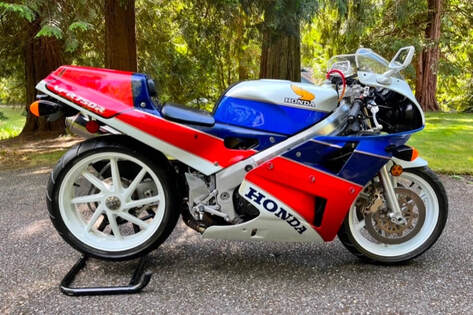 Click on image for the BaT link Click on image for the BaT link $39,800 max bid (17 bids) Auctions are useful tools for helping set values, and not only auction sales but also "no sale" prices, like our example today. This 1989 VFR750R is a Canadian-spec version showing under 2000 miles with basic maintenance items addressed. There's a few scuffs but the original paddock stand is present. There's some mention of the engine being hydro-locked during the recent service, which is potentially a concern with the hi-tech titanium connecting rods and valves. The servicing tech assures us there was "no prolonged attempt to start the bike." —————-- For those who may not be familiar, hydro-lock occurs when the combustion cylinder fills with a fluid (usually gas from a leaking carburetor) which then abruptly stops the piston on its upward movement. Not a problem if one is turning over the engine by hand (or with the spark plug removed) but can theoretically bend a connecting rod if using the starter, which was apparently attempted in this case. —————-- As is always the case, a given vehicle is worth whatever a serious buyer is willing to pay on a given day, and on this day this RC30 was worth $39,800. Our seller disagreed. Always a good sound for a V4 lover, here's a running video: |
THE SHOP BLOG
|


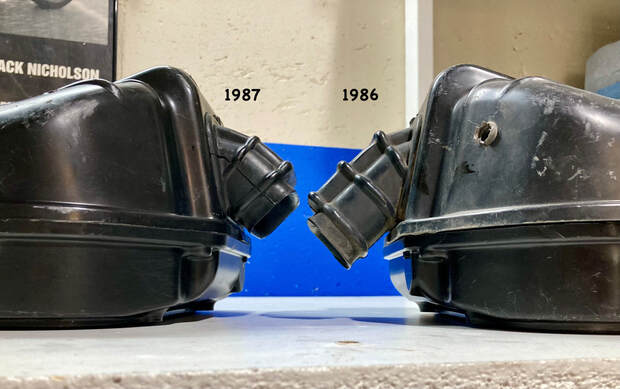

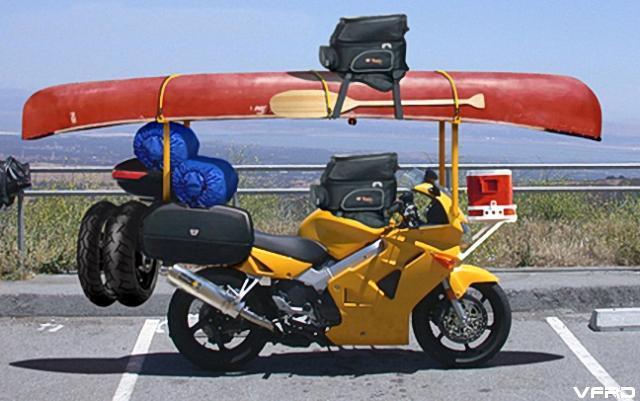


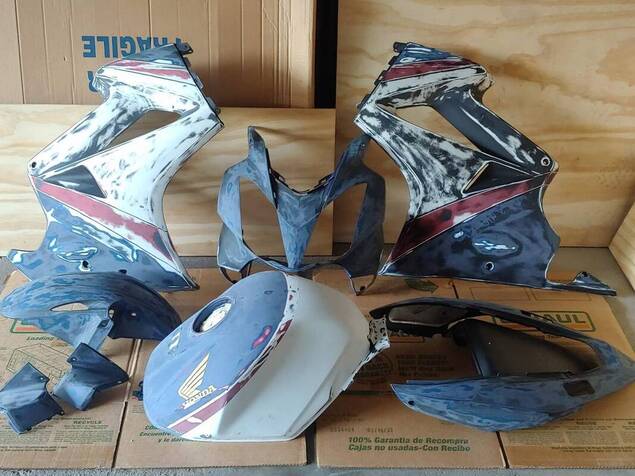






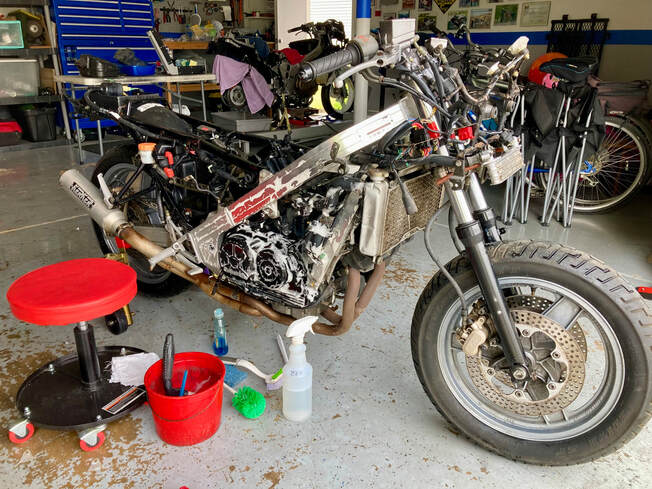
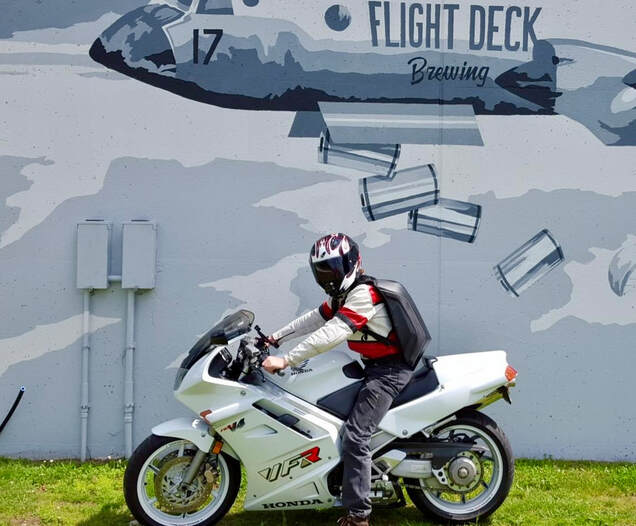




 RSS Feed
RSS Feed